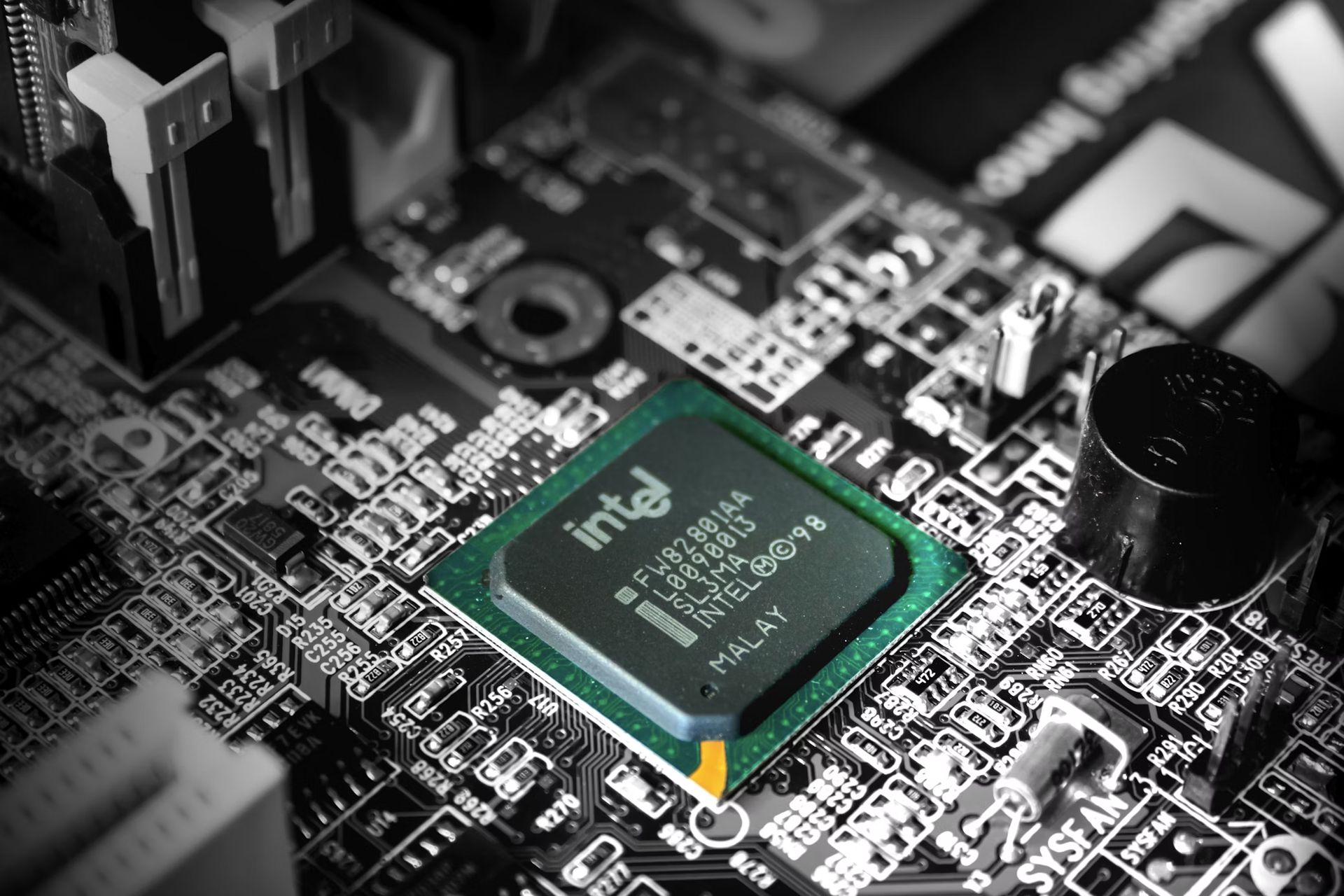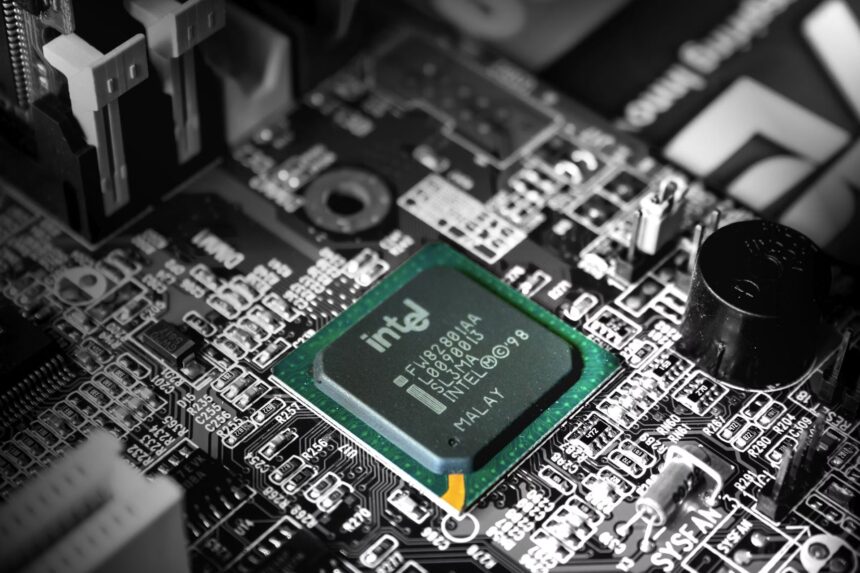
Shares of Intel rose 6% following the release of preliminary benchmarks for its new Arrow Lake-based Core Ultra 9 275HX processor, which demonstrated strong performance against competitors.
Intel shares rise 6% on strong Arrow Lake processor benchmarks
According to a review by Tom’s Hardware, the 275HX outperformed AMD’s Ryzen 9 7945HX3D by 7% in CPU Mark. Furthermore, the new Intel chip ran 34% faster than its predecessor, the i9-14900HX, and exhibited a 9% lead in single-threaded performance, despite having a 400 MHz clock speed disadvantage.
These preliminary results have generated investor interest, as the Arrow Lake-HX family of processors is expected to be included in upcoming gaming laptops, coinciding with Nvidia’s RTX 50 mobile series release. However, the review advised caution, noting that these benchmarks are based on a single processor sample, recommending patience for more extensive, independent evaluations before reaching final conclusions.
Investor sentiment appears optimistic about Intel’s position in the high-performance processing market, as reflected in the stock’s upward trend. The forthcoming official release of Arrow Lake-HX equipped laptops likely enhances this positive outlook, with consumers and industry observers eager to determine if actual performance matches these early benchmark results.
This little-known AI stock just surged 211%—Too late to buy?
Arrow Lake H performance details
Intel’s Arrow Lake H systems launched recently, reporting up to a 20% increase in multithread performance over the previous Meteor Lake generation. Testing of the Asus Zenbook Duo 2025 (UX8406) and MSI Prestige 16 AI Evo (B2HM) indicated that Intel’s initial performance claims were substantiated.
In terms of generation-over-generation performance, the Intel Core Ultra 9 285H on the Zenbook Duo achieved a 22% increase in Geekbench 6 multicore score compared to the Intel Core Ultra 9 185H on the Acer Swift Go 16, while the Prestige 16 scored 32% higher than the Swift Go 16. All three systems were configured with 32GB of RAM and a 1TB SSD, allowing for a near-perfect comparison of performance.
The Core Ultra 9 285H processor, Intel’s high-end mid-range performance chipset, was compared against leading competitors including the Apple M4 in the MacBook Pro 14, the M4 Pro in the MacBook Pro 16, the AMD Ryzen AI 9 HX 370 in the Zenbook S16, and the Snapdragon X Elite (XIE-84-100) in the Samsung GalaxyBook 4 Edge. On both the ZenBook Duo and Prestige 16, Intel’s Arrow Lake outperformed Apple’s M4, Snapdragon X Elite, and AMD Ryzen AI 9 in multicore performance.
While Apple maintained an edge in single-core performance, Arrow Lake performed comparably with Qualcomm and surpassed AMD on single-thread power. The Prestige 16’s Core Ultra 9 Geekbench multicore scores were 15% higher than the Apple M4 but 31% behind the M4 Pro, aligning with expectations given the M4 Pro’s superior performance relative to the M3 Max for a lower price point.
Benchmarking and gaming performance
To supplement performance testing, a Handbrake test was conducted to measure video editing capability. The ZenBook Duo’s Intel Core Ultra 9 285H completed the compression of a 4K version of “Tears of Steel” to 1080p 30fps in 5 minutes and 4 seconds, while the Prestige 16 accomplished the task significantly faster at 4:12. This performance gap is attributed to thermal management differences, as the Zenbook Duo is a dual-screen laptop, while the Prestige 16 is a thicker, mid-range business device.
The ZenBook Duo’s Handbrake time outperformed the Zenbook S16’s Ryzen AI 9, while the Prestige 16’s results were faster than the M4 MacBook Pro 14 and the Snapdragon X Elite Samsung GalaxyBook Edge 4. The M4 Pro surpassed all other devices listed, but the Prestige 16’s 4:12 completion time is notable.
Additionally, gaming performance assessments were conducted in Borderlands 3, Shadow of the Tomb Raider, and Sid Meier’s Civilization VI: Gathering Storm. The Arrow Lake-H gaming benchmarks on the Prestige 16 showed close competition with the Apple M4 and AMD Ryzen AI 9. The ZenBook Duo’s gaming performance lagged behind the MSI, likely due to the thermal constraints of its dual-screen design.
Although Intel’s Arrow Lake series is a successor to Meteor Lake, its integrated graphics processing unit (iGPU) does not match the power of the Intel Arc 140V found on Lunar Lake chipsets. Despite this, early analysis indicates promising results for Arrow Lake H, especially in standard testing environments like Geekbench 6 and 3DMark.
While it is expected that the Core Ultra 5 and Core Ultra 7 200H variants of the Arrow Lake H chipsets may yield lower multithread benchmark performance, Intel’s preliminary claims of up to a 20% performance increase from generation to generation appear to be accurate.
In summary:
- Intel’s 6% stock surge suggests early optimism is already priced in.
- Preliminary benchmarks show strong performance, but independent testing is needed for confirmation.
- Arrow Lake-HX processors will power next-gen gaming laptops, aligning with Nvidia’s RTX 50 mobile GPU launch.
- Intel’s multicore performance leads against AMD Ryzen AI 9 and Apple M4, but Apple’s single-core remains stronger.
- AI and gaming growth potential could drive future gains, but long-term impact depends on real-world performance.
- Short-term traders may have already benefited, while long-term investors should wait for official reviews.
- The current rally may be speculative, making it risky to buy at this peak without further data.
- Investors should monitor real-world performance benchmarks and laptop adoption trends before making a decision.
- Patience is advised to avoid overpaying based on early, unverified hype.
Disclaimer: The content of this article is for informational purposes only and should not be construed as investment advice. We do not endorse any specific investment strategies or make recommendations regarding the purchase or sale of any securities.
Featured image credit: Slejven Djurakovic/Unsplash






